Discover 35 hidden attractions, cool sights, and unusual things to do in Yokohama (Japan). Don't miss out on these must-see attractions: Yokohama Hakkeijima Sea Paradise, Sankei-en, and Yamashita Park. Also, be sure to include Nogeyama Zoo in your itinerary.
Below, you can find the list of the most amazing places you should visit in Yokohama (Kanagawa).
Table of Contents
Yokohama Hakkeijima Sea Paradise

Also known as: 横浜・八景島シーパラダイス
Large amusement park with marine mammals. Yokohama Hakkeijima Sea Paradise is an amusement park consisting of an aquarium, shopping mall, hotel, marina and amusement rides. It is located in Hakkeijima, Kanazawa-ku, Yokohama, Kanagawa, Japan. It opened for business on May 8, 1993.
It is a pay-as-you-go theme park, having no gates or admission charges. Visitors have the option of buying a day pass or paying for each attraction separately. With 4,770,000 visitors in 2007, it ranks sixth among Asian amusement parks in terms of attendance.[1]
Address: Hakkeijima, Kanazawa, Yokohama, 236-0006 Yokohama (金沢区)
Sankei-en
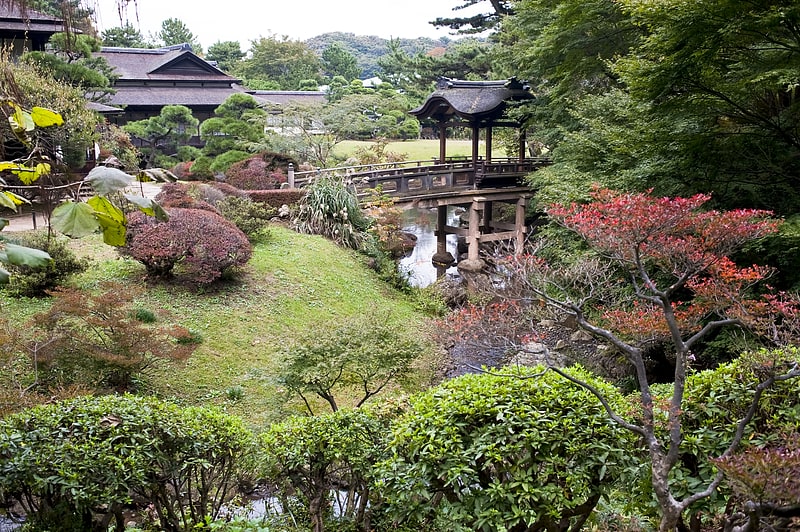
Also known as: 三溪園
Longtime garden with historic buildings. Sankei-en is a traditional Japanese-style garden in Naka Ward, Yokohama, Japan, which opened in 1906. Sankei-en was designed and built by Tomitaro Hara, known by the pseudonym Sankei Hara, who was a silk trader. Almost all of its buildings are historically significant structures bought by Hara himself in locations all over the country, among them Tokyo, Kyoto, Kamakura, Gifu Prefecture, and Wakayama prefecture. Ten have been declared Important Cultural Property, and three more are Tangible Cultural Properties of Japan designated by the City of Yokohama. Badly damaged during World War II, the garden was donated in 1953 to the City of Yokohama, which entrusted it to the Sankeien Hoshōkai Foundation. Sankei-en was then restored almost to its pre-war condition.[2]
Address: 58 Honmokusannotani, Naka Ward, Yokohama, 231-0824 Yokohama (中区)
Yamashita Park
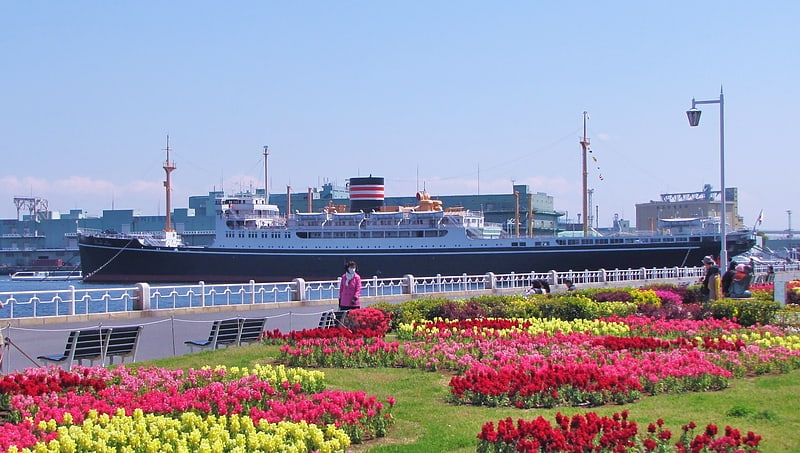
Also known as: 山下公園
Park in Yokohama, Japan. Yamashita Park is a public park in Naka Ward, Yokohama, Japan, famous for its waterfront views of the Port of Yokohama.[3]
Address: 279 Yamashitacho, Naka-ku, 231-0023 Naka (中区)
Nogeyama Zoo
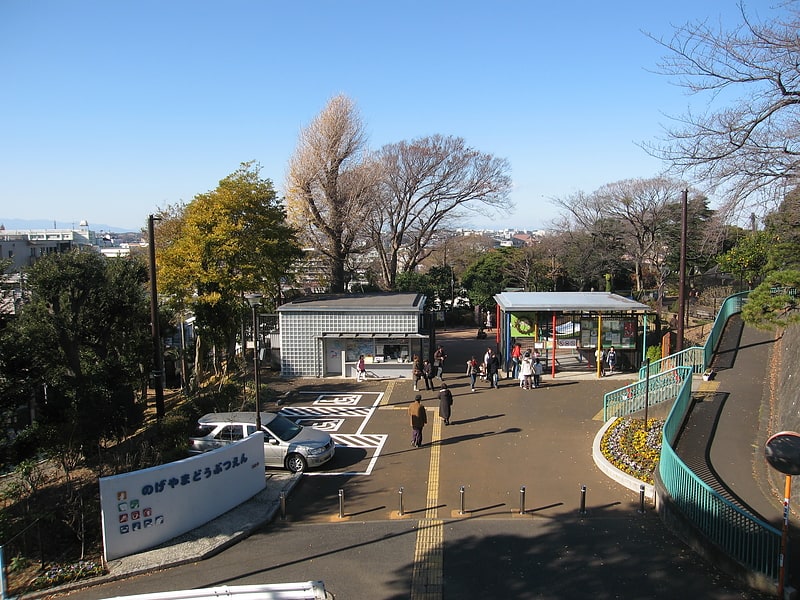
Also known as: 野毛山動物園
Leafy city zoo with a petting area. Nogeyama Zoological Gardens is a free zoo opened in April 1951 and located in Nogeyama Park, in Nishi-ku, Yokohama, Japan. It covers 9.6 hectares and houses about 1400 animals of 100 different species. It is open from 9:30 am to 4:00 pm and is closed on Mondays.
The zoo is operated by the Yokohama Zoological Garden, and is a member of the Japanese Association of Zoos and Aquariums (JAZA).[4]
Address: 63-10 Oimatsuchō, Nishi-ku, Yokohama-shi, 220-0032 Yokohama (西区)
Yokohama Cosmo World
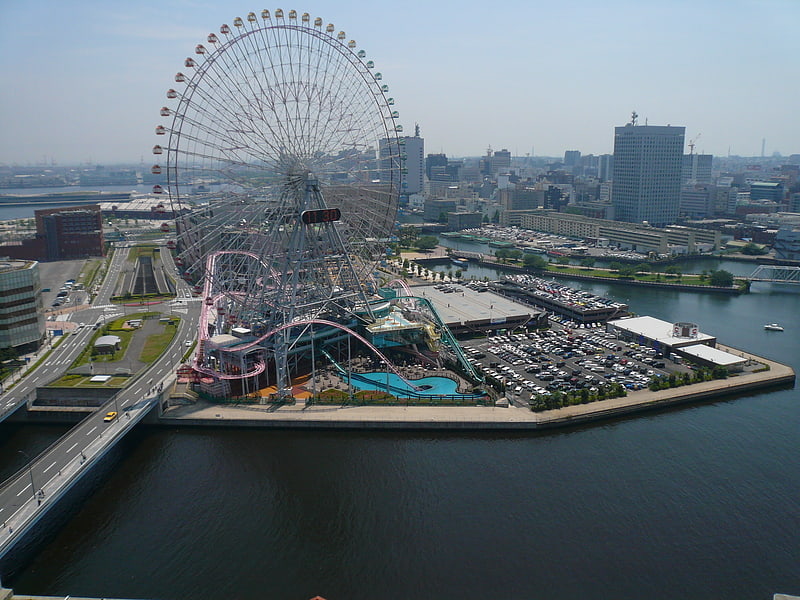
Also known as: よこはまコスモワールド
Theme park in Yokohama, Japan. Yokohama Cosmo World is a theme park in Yokohama, Kanagawa Prefecture, Japan. It contains the Cosmo Clock 21, formerly the tallest Ferris wheel in the world. It is home to a dive coaster, Diving Coaster: Vanish.[5]
Address: 2-8-1 Shinko, Naka-ku, 231-0001 Yokohama (西区)
Yokohama Stadium
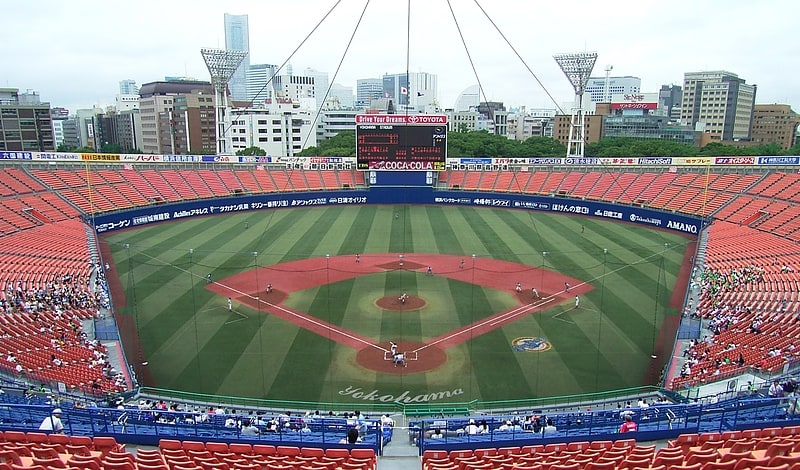
Also known as: 横浜スタジアム
Stadium in Yokohama, Japan. Yokohama Stadium is a stadium in Naka-ku, Yokohama, Japan. It opened in 1978 and has a capacity of 34,046 people.
It is primarily used for baseball and is the home field of the Yokohama DeNA BayStars. The stadium features dirt around the bases and pitcher's mound, but with dirt colored turf infield and base paths. The entire green portion of the field is also turfed.
It hosted an Australian rules football match and drew the second largest crowd for such an event outside of Australia.[6]
Yokohama Port Museum
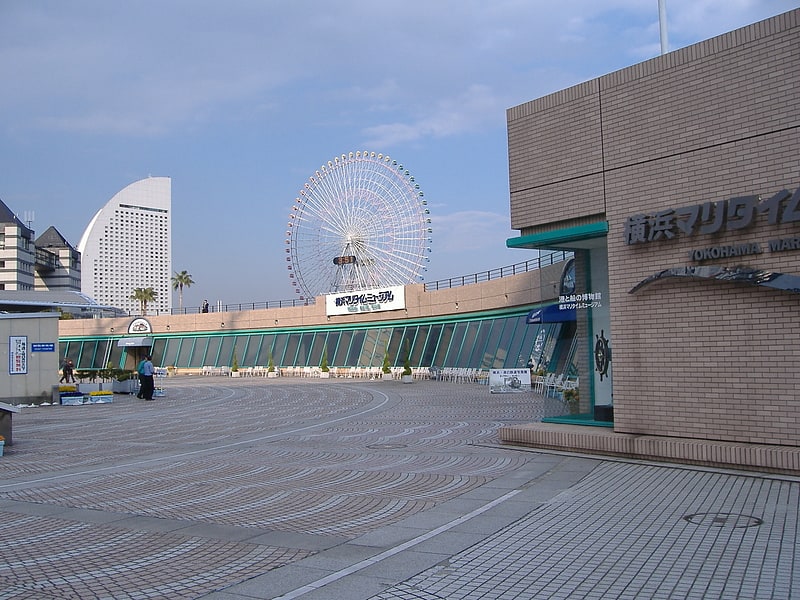
Also known as: 横浜みなと博物館
Museum in Yokohama, Japan. Yokohama Port Museum, formerly known as Yokohama Maritime Museum is a museum in Yokohama, Kanagawa Prefecture, Japan. It is located are located in the Nippon Maru Memorial Park, which is found in the Minato Mirai 21 District Nishi-ku ward of the central business district.[7]
Address: 2-1-1, Minatominrai, Nishi-Ku, 220-0012 Minatomirai (西区)
Yokohama Arena

Also known as: 横浜アリーナ
Arena in Yokohama, Japan. Yokohama Arena is an indoor arena located in Yokohama, Japan. The capacity of the arena is 17,000 and was opened in 1989. The arena was modeled after US sports venue Madison Square Garden in New York City. It is a five-minute walk from the closest station, Shin-Yokohama Station on the JR/Yokohama Municipal Subway.
As one of the largest concert venues in the Kantō region, it is a frequent location for artists to end their tours. The spacious stage allows for more complex set design and lighting, but the reasonable size makes it easier to sell out than the Tokyo Dome.[8]
Address: 3-10 Shinyokohama, 222-0033 Yokohama (港北区)
Marine Tower
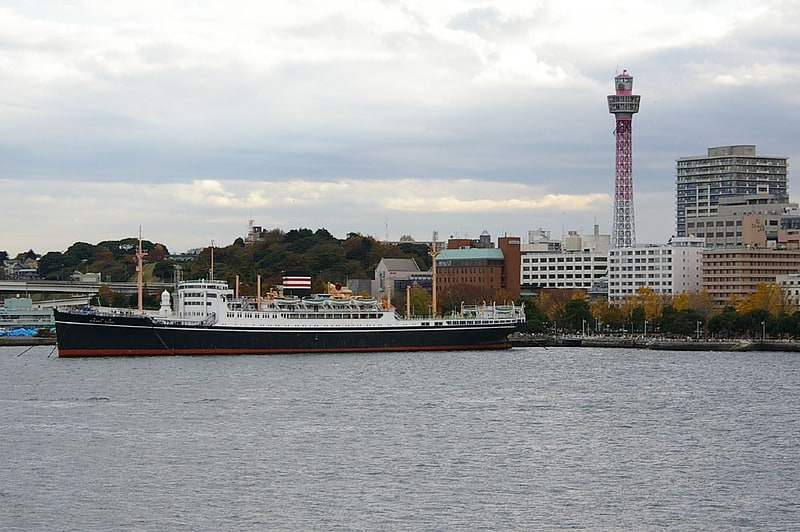
Also known as: 横浜マリンタワー
Tower in Yokohama, Japan. Yokohama Marine Tower is a 106 metres high lattice tower with an observation deck at a height of 100 metres in Naka Ward, Yokohama, Japan.
The light characteristic is marked by a flash every twenty seconds, whereby the light's colour is alternating red and green. Originally, at night, the tower shaft itself was lit green and red according to its markings, but now, after the reopening in May 2009, the lights are white.[9]
Address: 15 Yamashitacho, 231-0023 Yokohama (中区)
Shin-Yokohama Park
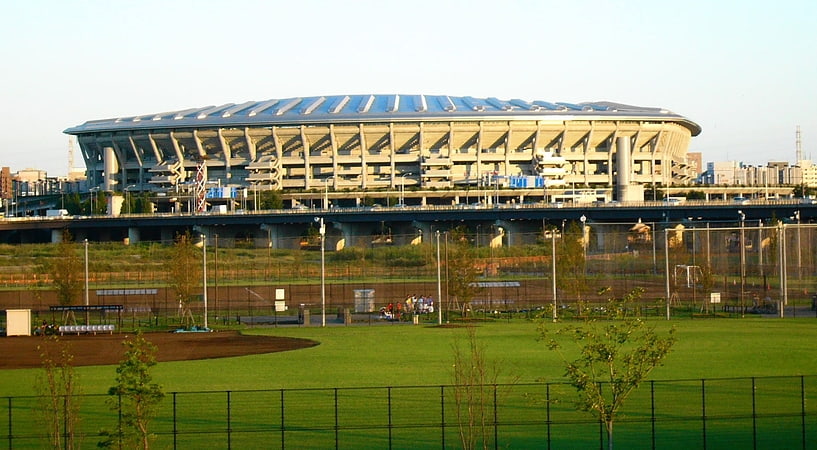
Park in Yokohama, Japan. Shin-Yokohama Park is a public park in Kōhoku Ward, Yokohama, Japan. It contains Nissan Stadium, a number of sporting fields and a birdwatching area. Nissan stadium is the largest stadium in Yokohama city and has a capacity of 72,000 spectators.
During a typhoon in October 2017 the park was partially flooded.[10]
Japan Coast Guard Museum Yokohama
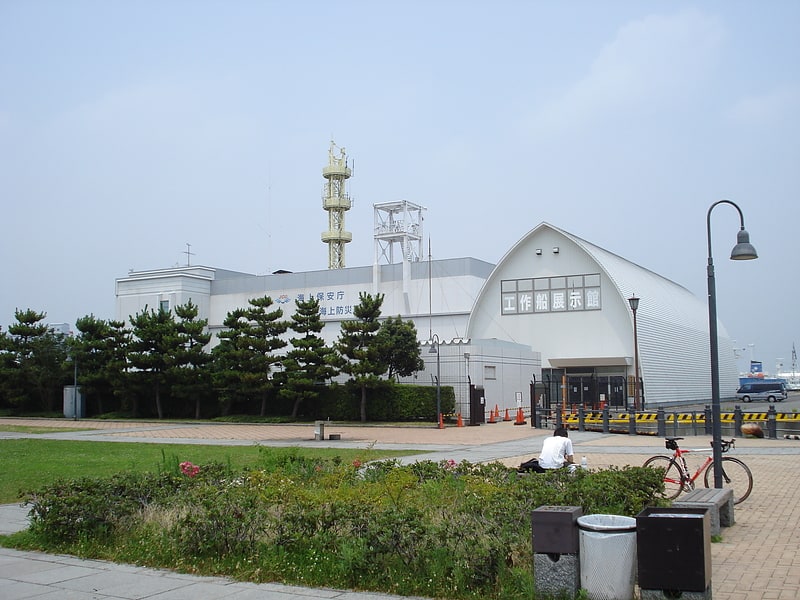
Museum in Yokohama, Japan. The Japan Coast Guard Museum Yokohama is a museum in Naka-ku, Yokohama, Kanagawa Prefecture, Japan, dedicated to maritime security and the Japan Coast Guard. It opened on 10 December 2004.[11]
Address: 1 Chome-2-1 Shinkō, Naka-ku, Yokohama-shi, 231-0001 Yokohama (西区)
Yokohama Museum of Art
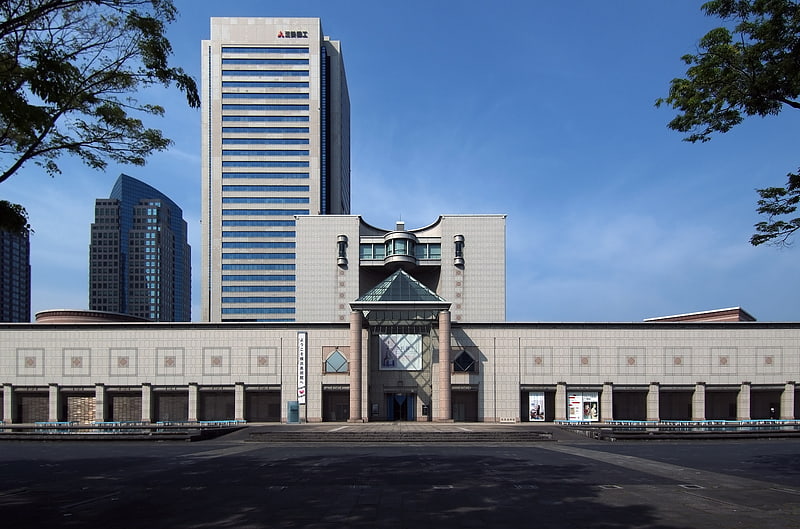
Also known as: 横浜美術館
Art museum in Yokohama, Japan. Yokohama Museum of Art, founded in 1989, is located in the futuristic Minato Mirai 21 district of the Japanese city Yokohama, next to the Yokohama Landmark Tower.[12]
Address: 3-4-1, Mintomirai, Nishi-ku, 220-0012 Yokohama (西区)
Yokohama Red Brick Warehouse

Also known as: 横浜赤レンガ倉庫
Shopping mall in Yokohama, Japan. The Yokohama Red Brick Warehouse is a historical building that is used as a complex that includes a shopping mall, banquet hall, and event venues. The complex, officially known as the Newport Pier Bonded Warehouse, was originally used as customs buildings, and has two sections: Warehouse No.1 and No.2. It is operated by Yokohama Akarenga Co. Ltd. and located at the Port of Yokohama in Naka-ku, Yokohama, Kanagawa, Japan.[13]
Address: 1 Chome-1 Shinko, Naka Ward, Yokohama, 231-0001 Yokohama (西区)
Yokohama Archives of History
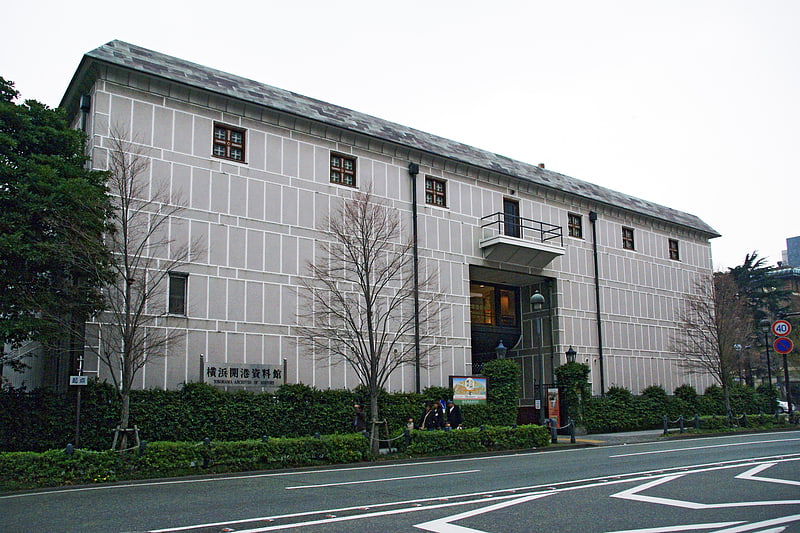
Also known as: 横浜開港資料館
Archive in Yokohama, Japan. The Yokohama Archives of History in Naka ward, central Yokohama, near Yamashita Park, is a repository for archive materials on Japan and its connection with foreign powers since the arrival of Commodore Matthew Perry in 1853. The archives are next to Kaiko Hiroba where Commodore Perry landed to sign the Convention of Kanagawa.
The archives are housed in a newly built annex of the former British Consulate building. The British Consulate building, which replaced a building destroyed in the 1923 Great Kantō earthquake, was completed in 1931 and used as a consulate until 1972. The ground floor of the building is open to the public and there is a small exhibition room which is free. There are plaques in the building commemorating consulate employees who died in the earthquake, as well as British sailors who died during the British Bombardment of Kagoshima in 1863. The British Court for Japan, under the British Supreme Court for China and Japan, sat in the consulate compound from 1879 to 1900. Prior to that the British Provincial Court for Kanagawa sat in the compound from 1865 to 1878.
The archives include a museum which tells the story of Japan and Yokohama's opening to the West, beginning with the arrival of Commodore Perry and his black ships.
The reading room downstairs has historic Japanese and English newspapers and books. Materials include papers of Ernest Satow, foreign and Japanese newspapers of the Meiji period including, the Japan Daily Herald, the Japan Weekly Mail and Japan Punch. Many of the old newspapers have been copied onto new paper, making them very easy to handle. These copies can be accessed directly from the shelves and can be photocopied. There are also collections of various diplomatic papers relating to Japan's foreign relations. A select number of books on Japanese history, published by the archives, are also available for purchase.[14]
Address: 3 Nihon-Odori, 231-0021 Yokohama (中区)
Kawasaki Daishi

Also known as: 平間寺
12th-century Buddhist temple. Kawasaki Daishi is the popular name of Heiken-ji, a Buddhist temple in Kawasaki, Japan. Founded in 1128, it is the headquarters of the Chizan sect of Shingon Buddhism. Kawasaki Daishi is a popular temple for hatsumōde. In 2006, 2.72 million people engaged in hatsumōde here, the third largest figure in Japan and the largest in Kanagawa Prefecture. In 2016, the temple made preparations to receive 3 million visitors over the same period. Keihin Electric Express Railway, the oldest railroad company in the Kantō region of Japan, commenced service in January 1899 to carry passengers to Kawasaki Daishi from Tokyo.
Heiken-ji is known formally as Kongōzan Kinjōin Heiken-ji (金剛山金乗院平間寺).[15]
Address: 4-48 Daishi-machi, 210-0816 Yokohama
Ōtsuka-Saikachido Site
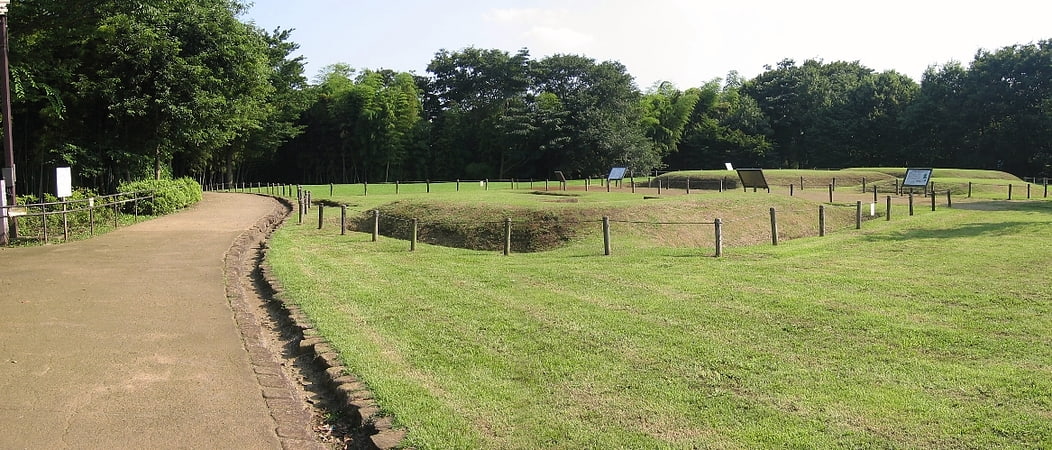
The Ōtsuka-Saikachido Site is an archaeological site in the Nakagawa neighborhood of Tsuzuki-ku, Yokohama, Kanagawa Prefecture, in the southern Kantō region of Japan containing a Yayoi period settlement trace. The site was designated a National Historic Site in 1986.[16]
Nippon Maru Memorial Park
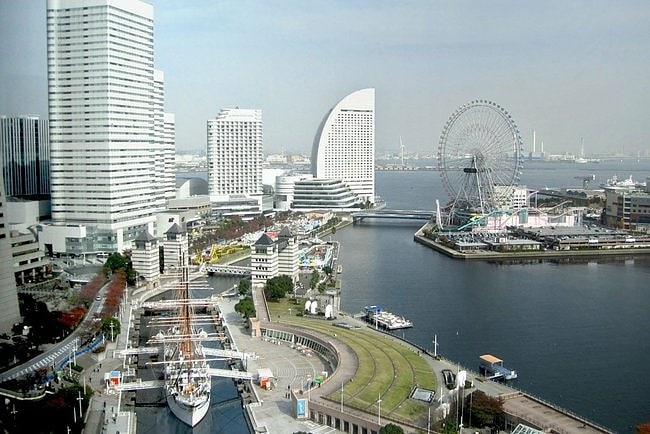
Also known as: 日本丸メモリアルパーク
History museum in Yokohama, Japan. Nippon Maru Memorial Park is a park in Yokohama, Kanagawa Prefecture, Japan.[17]
Address: 2-7-10 Minatomirai, 220-0012 Minatomirai (西区)
Sōji-ji
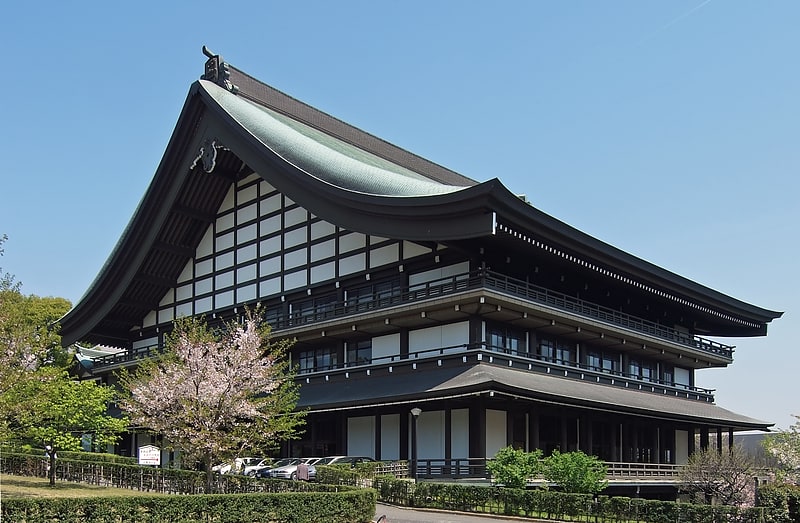
Also known as: 總持寺
Buddhist temple in serene, leafy digs. Sōji-ji is one of two daihonzan of the Sōtō school of Zen Buddhism. The other is Eihei-ji temple in Fukui Prefecture. Fodor's calls it "one of the largest and busiest Buddhist institutions in Japan". The temple was founded in 740 as a Shingon Buddhist temple. Keizan, later known as Sōtō's great patriarch Taiso Jōsai Daishi, founded the present temple in 1321, when he renamed it Sōji-ji with the help and patronage of Emperor Go-Daigo. The temple has about twelve buildings in Tsurumi, part of the port city of Yokohama, one designed by the architect Itō Chūta.[18]
Address: 2-1 Tsurumi, 230-8686 Yokohama (鶴見区)
Hikawa Maru
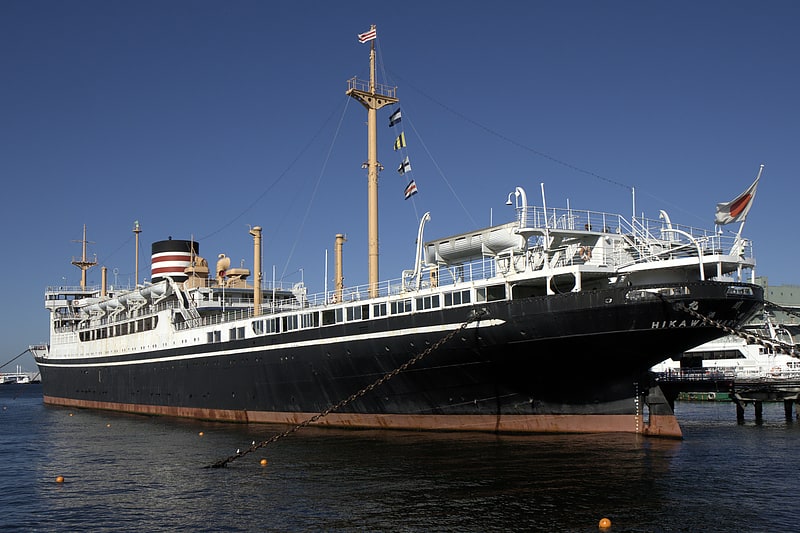
Also known as: 氷川丸
Maritime museum on a historic ship. Hikawa Maru is a Japanese ocean liner that Yokohama Dock Company built for Nippon Yūsen Kabushiki Kaisha. She was launched on 30 September 1929 and made her maiden voyage from Kobe to Seattle on 13 May 1930. She is permanently berthed as a museum ship at Yamashita Park, Naka-ku, Yokohama.
Hikawa Maru was one of three Hikawa Maru class motor ships, all named after major Shinto shrines. The Hikawa Shrine is in Saitama in central Honshu. Her two sister ships, both lost in the Second World War, were Heian Maru and Hie Maru.[19]
Yokohama Mosque
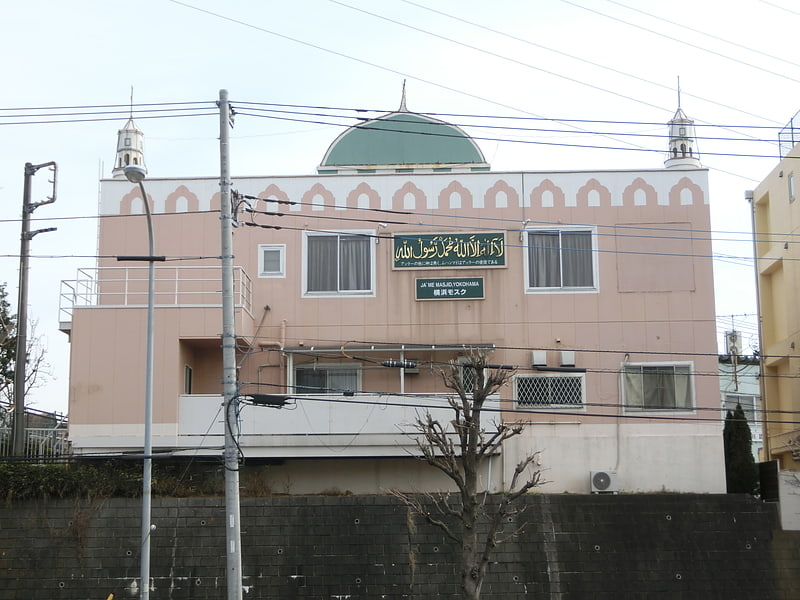
The Yokohama Mosque or Ja'me Masjid, Yokohama is a mosque in Yokohama City, Kanagawa Prefecture, Japan.[20]
Hara Model Railway Museum
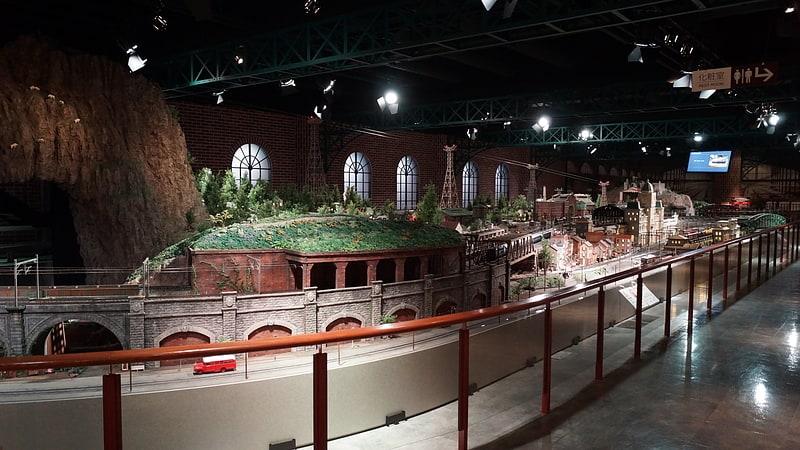
Also known as: 原鉄道模型博物館
Museum in Yokohama, Japan. The Hara Model Railway Museum is a model railway museum in Nishi-ku, Yokohama, Japan, which opened on 10 July 2012. Managed by Mitsui Fudosan, the museum houses the extensive collection of model trains built and amassed by the Japanese model railway enthusiast Nobutaro Hara. The museum covers an area of approximately 1,700 m², with the display area covering an area of approximately 1,200 m².[21]
Address: Yokohama-shi, Nishi-ku, Takashima, 1 Chome−1−1番2号, 〒220-0011 Yokohama (西区)
NYK Maritime Museum
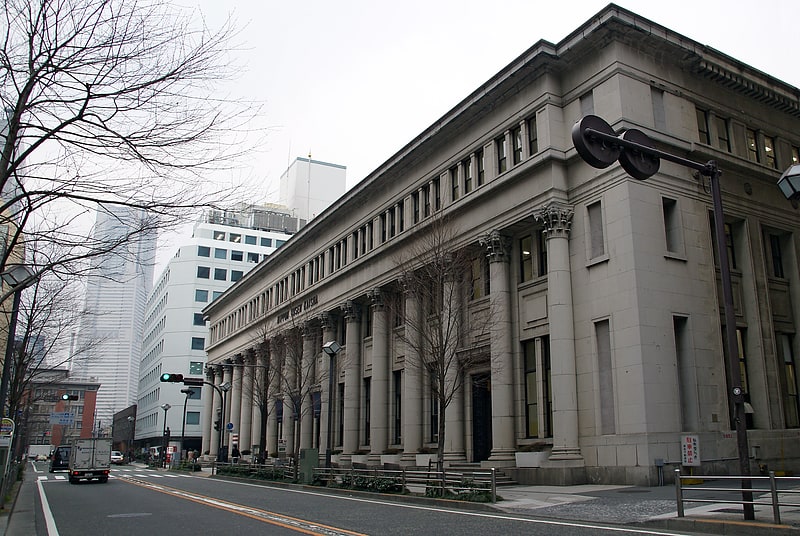
Also known as: 日本郵船歴史博物館
Museum in Yokohama, Japan. The NYK Maritime Museum is a museum in Naka-ku, Yokohama, Kanagawa Prefecture, Japan, dedicated to the maritime history of Japan and of the museum's operator, shipping company Nippon Yūsen Kabushiki Kaisha. It was opened in 1993.[22]
Address: 3-9 Kaigandori, 231-0002 Yokohama (中区)
Nihon Minka-en

Also known as: 日本民家園
Open-air museum with historical houses. Nihon Minka-en is a park in the Ikuta Ryokuchi Park of Tama-ku, Kawasaki, Kanagawa Prefecture, Japan. On display in the park is a collection of 20 traditional minka from various parts of Japan, especially thatched-roofed houses from eastern Japan. Of these, nine have received the designation of Important Cultural Assets from the national government. The houses are varied, and include examples from regions of heavy snow, lodgings for travellers, and a theatrical stage. Visitors can see regional variety and differences in construction.
The park is operated by the city of Kawasaki. Admission is free to visitors who are not older than junior-high-school age. The entrance is a fifteen-minute walk from Mukogaoka-Yuen Station on the Odakyu Odawara Line.[23]
Address: 7-1-1 Masugata,Tama-ku, 214-0032 Yokohama
Yokohama History Museum

Also known as: 横浜市歴史博物館
Museum in Yokohama, Japan. Yokohama History Museum is a history museum in Tsuzuki-ku, Yokohama, Kanagawa, Japan. Its exhibition focuses on the history of the city of Yokohama.[24]
Address: 1 Chome-18-1 Nakagawachūō, Tsuzuki-ku, Yokohama-shi, 224-0003 Yokohama
Anpanman museum

Also known as: 横浜アンパンマンこどもミュージアム&モール
Yokohama Anpanman Children's Museum is a complex in Minato Mirai 21, Yokohama, Kanagawa Prefecture, Japan. Dedicated to Takashi Yanase's popular Anpanman franchise. It is one of five such complexes in Japan.
In 2019, this facility moved to the neighborhood, removed "& Mall" from the facility name and renamed it "Yokohama Anpanman Children's Museum".[25]
Address: 4-3-1 Minatomirai, Nishi-ku, 220-0012 Yokohama (西区)
Yokohama Ma Zhu Miao
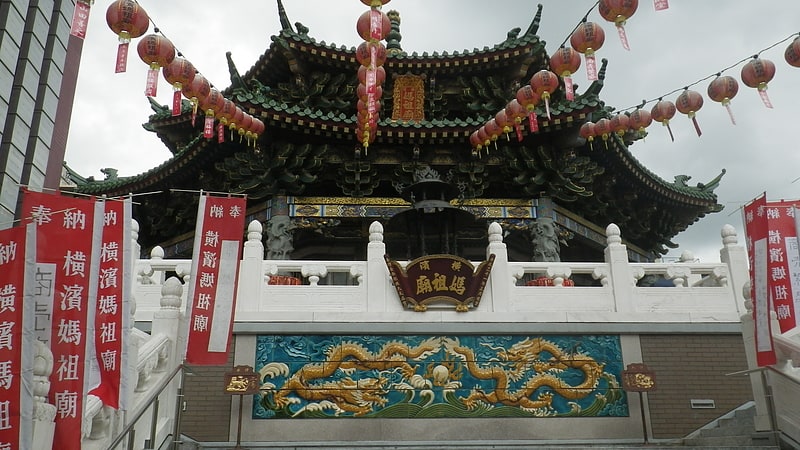
Also known as: 横浜媽祖廟
Taoist temple in Yokohama, Japan. The Yokohama Ma Zu Miao is a temple of the Chinese Goddess Mazu located in Yokohama, Japan. It opened on 17 March 2006. It is located in Yokohama's Chinatown.[26]
Address: 136 Yamashitacho, Naka-ku, 231-0023 Yokohama (中区)
Yokohama Bay Bridge
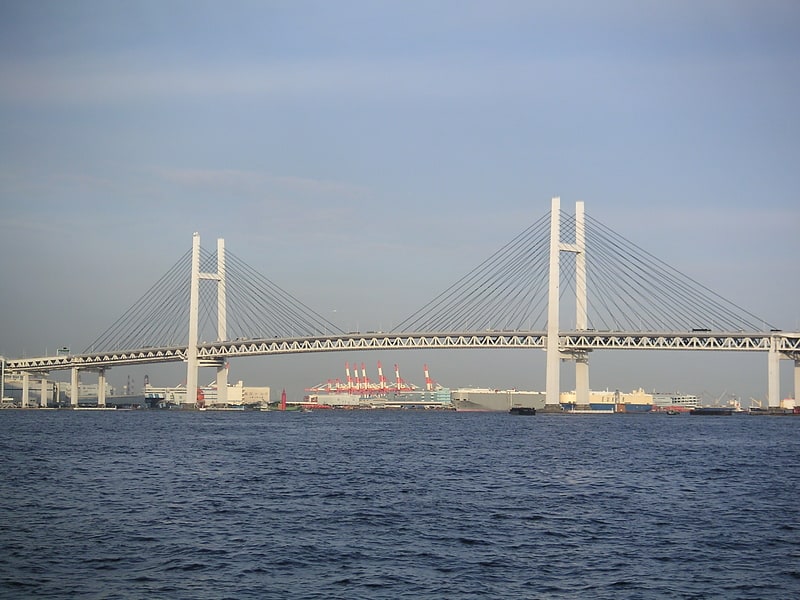
Also known as: 横浜ベイブリッジ
Iconic car bridge with night lights. The Yokohama Bay Bridge is an 860 metres cable stayed bridge in Yokohama, Japan. Opened September 27, 1989, it crosses Tokyo Bay with a span of 460 metres. The toll is ¥600. The bridge is part of the Bayshore Route of the Shuto Expressway.[27]
Address: Daikokufuto Tsurumi-ku, 230-0054 Yokohama
Futako Shrine
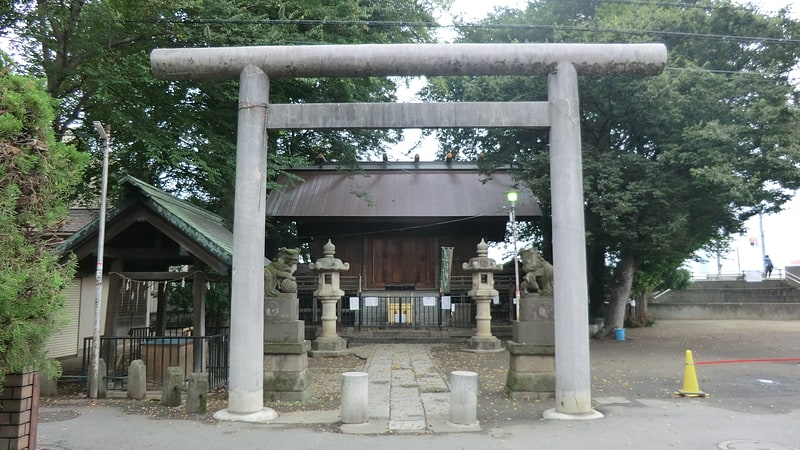
Also known as: 二子神社
Shinto shrine in Kawasaki, Japan. Futako shrine, located in Takatsu-ku, Kawasaki, is a Shinto shrine in Kanagawa prefecture, Japan. It was established in 1641 and was called "Shinmeisha". It was renamed "Futako Shrine" in the Meiji Era, after the area in which it is located.[28]
Muza Kawasaki Symphony Hall
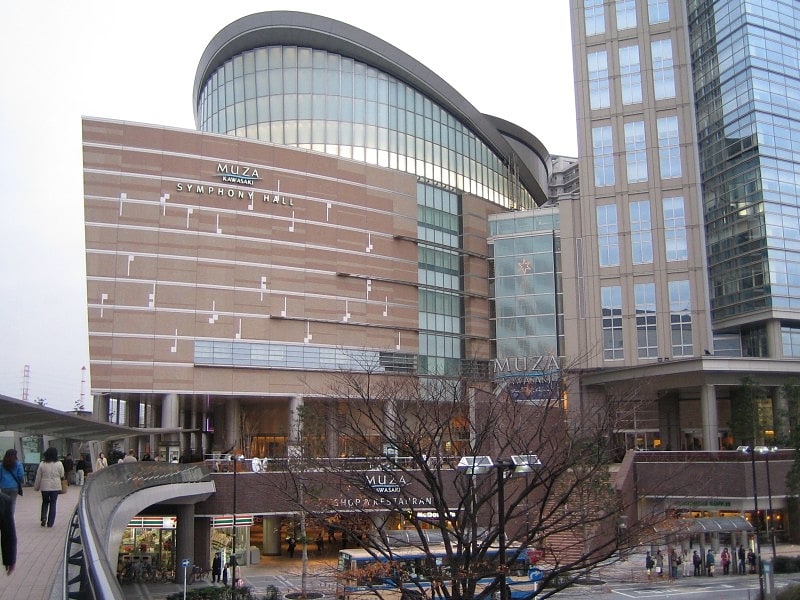
Also known as: ミューザ川崎シンフォニーホール
Concert hall in Kawasaki, Japan. Muza Kawasaki Symphony Hall is a concert hall in Saiwai-ku, Kawasaki, Kanagawa, Japan. The name is coined from music and za lit. 'seat'. The vineyard-style concert hall, with a capacity of 1,997, was built for the eightieth anniversary of the foundation of the city.
The hall opened in July, 2004 with a performance of Mahler's Symphony No. 8 by the Tokyo Symphony Orchestra. In that year the orchestra, previously without a permanent home, took up residence. Well known for its acoustics, the hall has seen concerts by Simon Rattle and the Berlin Philharmonic and Riccardo Muti and the Vienna Philharmonic. The bell to announce the imminent start of a concert at the hall is a recording of the bell at Salzburg Cathedral.[29]
Address: 1310 Ōmiyachō, Saiwai-ku, Kawasaki-shi, 212-8554 Yokohama
Port of Yokohama
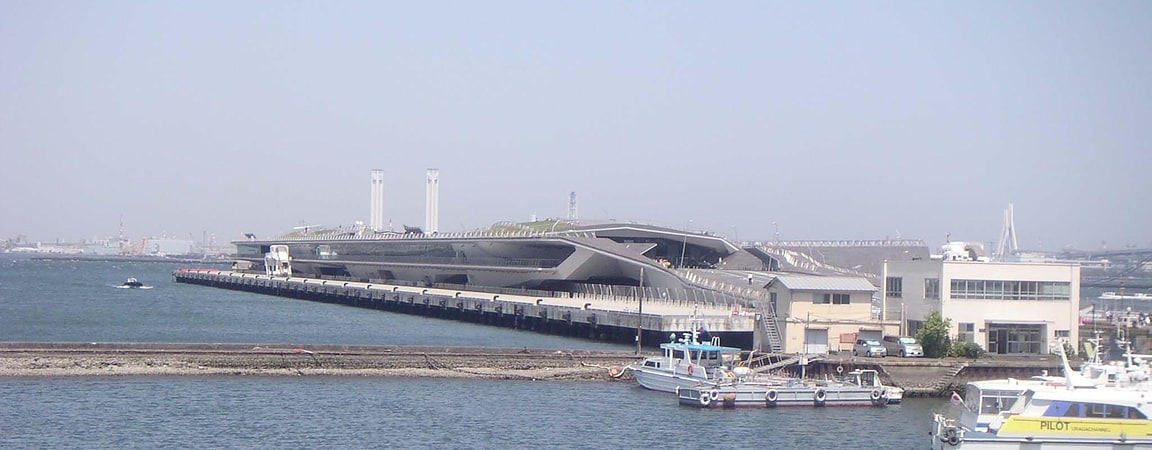
Also known as: 横浜港
Seaport in Yokohama, Japan. The Port of Yokohama is operated by the Port and Harbor Bureau of the City of Yokohama in Japan. It opens onto Tokyo Bay. The port is located at a latitude of 35.27–00°N and a longitude of 139.38–46°E. To the south lies the Port of Yokosuka; to the north, the ports of Kawasaki and Tokyo.[30]
Taro Okamoto Museum of Art
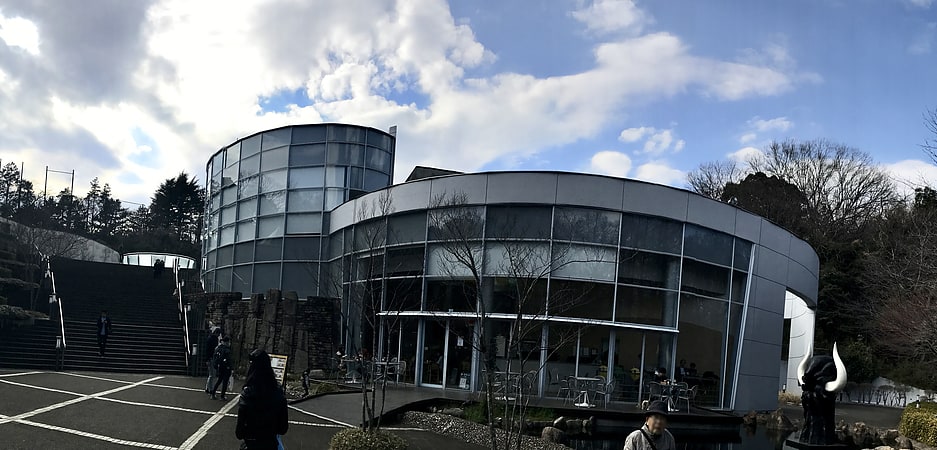
Also known as: 川崎市岡本太郎美術館
Museum in Kawasaki, Japan. Taro Okamoto Museum of Art is an art museum located in Tama-ku, Kawasaki, Kanagawa, Japan. The Taro Okamoto Museum of Art mainly collects and preserves the works of Taro Okamoto, and his parents Kanoko and Ippei.[31]
Address: 7-1-5 Masugata, Tama-ku, 214-0032 Tama
Sacred Heart Cathedral
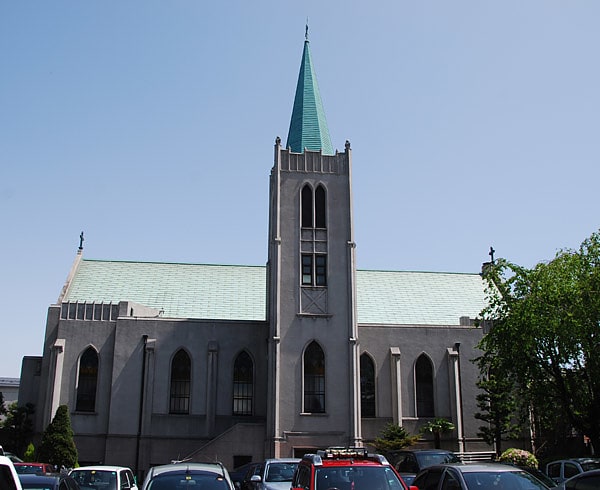
Also known as: カトリック山手教会
Cathedral in Yokohama, Japan. Sacred Heart Cathedral is the seat of the bishop of the Roman Catholic Diocese of Yokohama, Japan. The Yokohama diocese includes Kanagawa, Shizuoka, Nagano, and Yamanashi prefectures. As it is located at 44 Yamate-cho, Naka-ku, the cathedral is commonly known locally as Yamate Catholic Church.
Immediately after the lifting of the a long-standing ban on Christianity, a Catholic church was built in 1862 by the Paris Foreign Missions Society in the Yokohama foreign settlement (currently Yamashita-cho). This church was moved to its current location in 1906, and was a brick building with two bell towers, which was completely destroyed during the 1923 Great Kantō earthquake. The present Yamate Catholic Church was designed by Czech architect Jan Josef Švagr in the Neo-Gothic style and completed in 1933. When the Diocese of Yokohama was erected in 1937, the Yamate church became its cathedral.
Currently, Catholic Masses are held on weekdays at 7am, Saturdays at 6pm, and Sundays at 7.30am, 9.30am (English services) and 1130am. Spanish language services are held every month on the second Sunday at 2pm (excluding July and August, when no Spanish services are held).[32]
Address: 44 Yamatecho, 231-0862 Yokohama (中区)
Santonodai Site
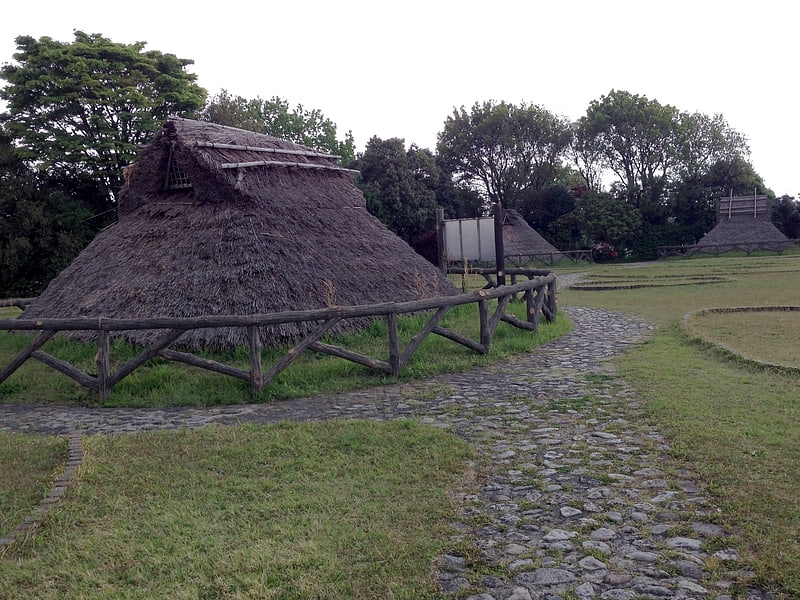
The Santonodai site is an archaeological park with the ruins of a large-scale Yayoi period settlement, located in the Okamura neighborhood of Isogo-ku, Yokohama, Kanagawa Prefecture in the southern Kantō region of Japan. It was designated a National Historic Site of Japan in 1966.[33]
Yokohama Air Cabin
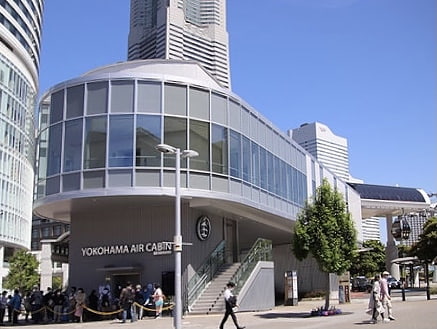
Tourist attraction in Yokohama, Japan. Yokohama Air Cabin is a gondola lift that was opened in 2021 in Yokohama, Kanagawa Prefecture, Japan. It connects to Sakuragichō Station and Yokohama Cosmo World. The system is 630 m long and has an elevation of 40 m.[34]
Yokohama Silk Museum
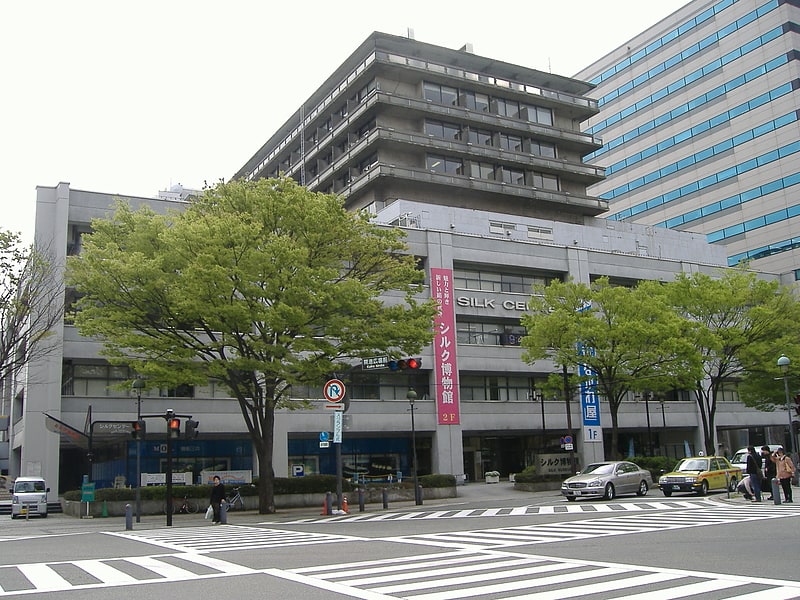
Also known as: シルク博物館
Museum in Yokohama, Japan. The Yokohama Silk Museum is a museum located in Naka-ku, Yokohama, Japan that covers the silk trade in Japan. The museum displays silk kimono and covers the importance of Yokohama as a silk port.
The objective of the museum is, according to their website:
To disseminate an understanding of the science and technology of silk production, display beautiful costumes for people to admire and promote the demand for silk.[35]
Address: No.1 Yamashita-cho, Naka-ku, Yokohama (中区)